Reviews
Speaking with silence
26 September 2013 | Reviews

Bo Carpelan. Photo: Charlotta Boucht / Schildts & Söderströms
Bo Carpelan
Mot natten
[Towards the night. Poems 2010]
Helsinki: Schildts & Söderströms, 2013. 69 p.
ISBN 978-951-52-32-20-5
€21, paperback
‘Don’t change, grow deeper ,’ wrote Bo Carpelan: over the years he broadened his poetic range and his personal idiom evolved, but it happened organically, without sudden upheavals of style or idea.
Mot natten (‘Towards the night’) is Carpelan’s last collection of poems. This is underlined by the book’s subtitle, Poems 2010. By then Carpelan (1926–2011) was already marked by the illness that took his life in early 2011. It doesn’t show in the quality of the poems, but knowing it may make it harder for the reader to approach them with unclouded eyes. When a great poet concludes his work one wants to seek a synthesis or a concluding message, and that may encumber one’s reading. So is there such a message? In some ways there is, but Carpelan was not a man of pointed formulations. His ideals emerged without much fuss. More…
Kari Hotakainen: Luonnon laki [Law of nature]
26 September 2013 | Mini reviews, Reviews
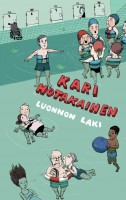 Luonnon laki
Luonnon laki
[Law of nature]
Helsinki: Siltala, 2013. 283p.
ISBN 978-952-2341853
€23.90, hardback
Kari Hotakainen’s twelfth novel is characterised by a dramatic plot. A year and a half ago, the author had a car crash, which he miraculously survived. Luonnon laki draws on Hotakainen’s experience, at the same time continuing the series started by his last two novels, with their commentaries on the contemporary world. The main character, the entrepreneur Rauhala, wakes up in hospital after a car crash and begins the slow process of recovery and rehabilitation. Incapable of movement and dependent on the care of others, the man has time to think – to think, for example of the free healthcare service of a welfare state such as Finland, whose cost, in his case, is high. Ideologically estranged from her father, his daughter is about to give birth to her first child; Rauhala himself is essentially reborn and makes peace with his daughter. Both melancholy and amusing, linguistically rich and delicious in its associatons, this tale and its characters are highly enjoyable.
Translated by Hildi Hawkins
Philip Teir: Vinterkrig. En äktenskapsroman [The winter war. A marriage novel]
19 September 2013 | Mini reviews, Reviews
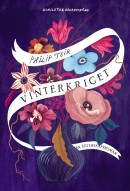 Vinterkrig. En äktenskapsroman
Vinterkrig. En äktenskapsroman
[Winter war. A marriage novel]
Helsingfors: Schildts & Söderströms, 2013. 326 p.
ISBN 978-951-52-3207-6
€26.70, hardback
Finnish translation:
Talvisota. Avioliittoromaani
Suom. (Translated by): Jaana Nikula
Helsinki: Otava, 2013. 347 p.
ISBN 978-9511269854
€30.30, hardback
This first novel by Philip Teir (born 1980) brings to mind a stereotype of the Finland-Swedish minority: pleasant, controlled, civilised and rather amusing. Teir has previously written short stories, and no doubt his work as a cultural journalist has sharpened his detailed perceptions of society and life in general. Hence, the result is controlled and rather amusing. In the focus are sociologist Max and personnel manager Katarina, who have in their long marriage become alienated from each other. Two grown-up daughters have problems of their own, as a working mother of small children, and as an arts student trying to find a direction for her life. Teir’s characters look for ways to solve their problems: Max seeks the company of a younger woman, whereas the more straightforward Katarina applies for a divorce. Yet, amidst confusion, Teir seems to place his trust in a traditional safety net, represented in the novel by the family and the community. The portrait of a middle-class, academic family with rather ordinary problems is ironically gentle: a pleasant reading experience.
A rare bird from Fancyland
20 August 2013 | Reviews
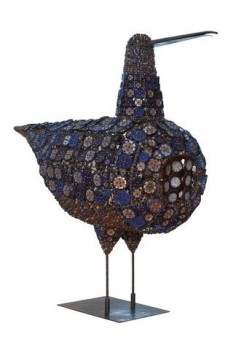
Bead-covered curlew, 1960. Height ca. 115 cm, Collection Kakkonen. Photo: Niclas Warius
Harri Kalha:
Birger Kaipiainen
Helsinki: Suomalaisen Kirjallisuuden Seura (The Finnish Literature Society), 2013. 249 p., ill.
(Summaries in Swedish and English)
ISBN 978-952-222-457-6
€46, hardback
Ceramics confectioner. Degenerate aristocrat. Ornamental criminal. These epithets can be found in Birger Kaipiainen, a new, full-length study of the ceramic artist by art historian Harri Kalha.
Throughout his artistic career Birger Kaipiainen (1915–1988) worked with forms, subjects and methods that were unfamiliar in the field of traditional ceramics, at least in mid-20th-century Finland, and made use of fantasy and ornament. As a ‘porcelain painter’ he showed little interest in the technical challenges of clay – although in his ceramic creations Kaipiainen explored three-dimensional form, montage, colour, texture and the tactile dimensions of the medium. More…
Aleksis Kivi: Kirjeet [Letters]
8 August 2013 | Mini reviews, Reviews
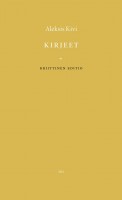 Kirjeet
Kirjeet
[Letters]
Critical edition, edited by Juhani Niemi et al.
Swedish-language letters translated into Finnish by Juhani Lindholm and Ossi Kokko
Helsinki: Suomalaisen Kirjallisuuden Seura (the Finnish Literature Society), 2012. 426 p, two map drawings
ISBN 978-952-222-390-6
€ 43, paperback
In his poetry, plays and masterly novel Seitsemän veljestä (Seven Brothers, 1870), Aleksis Kivi (1834–72) laid the foundations of Finnish fiction. Kivi died an early death, impoverished and mentally ill. In this critical edition seventy of his letters and three letters received by him are presented with notes and an introduction. Most of the book consists of background articles and supplementary items. Professor Jyrki Nummi provides an interesting analysis of biographies of Kivi. The other authors discuss, for example the literature Kivi drew on in his own works: he had read world classics in Swedish, but in Finnish there was not yet much to read apart from the folk poetry. Other topics of discussion are Kivi’s skill in using Swedish – the language of the educated class in Finland – and what his letters reveal about his network of acquaintances. The letters are grouped in chronological order, with introductions by Professor Emeritus Juhani Niemi. Most of the letters are comparatively short, sent to relatives and friends. They reflect Kivi’s attitude towards his own work, as well as his worries about his financial situation and declining health.
Translated by David McDuff
No sex in Finland
31 July 2013 | Reviews
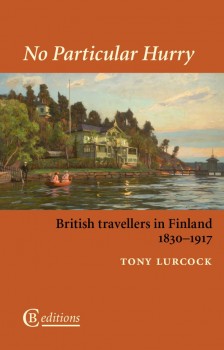 Tony Lurcock
Tony Lurcock
No Particular Hurry. British Travellers in Finland 1830–1917
London: CB editions, 2013. 278 p.
ISBN 978-0-9567359-9-7
£10, paperback
For British travellers of the late 18th- and early 19th-century Finland was mainly a transit area between Stockholm and St Petersburg, or on the way to exotic Lapland. A century later, the country was already a tourist destination in itself, a newly emergent nation state, though still subordinate to Russia.
Tony Lurcock’s anthology of travel literature about Finland is a sequel to his collection ‘Not so Barren or Uncultivated’: British Travellers in Finland 1760–1830 (reviewed in Books from Finland in June 2013).
The practical conditions of tourism were changing. English-language tour guides were being published, and Britain now had direct steamship connections to Finland, where rail, road and inland waterway traffic had been established. In 1887 the Finnish Tourist Association was founded with the aim of making life easier for foreign tourists on selected travel routes. However, the British – like many other foreigners – marvelled at some of the country’s curious features: the excruciating rural journeys by horse and cart, the wretched inns and strange choice of food, the rye bread and milk-drinking, and of course the sauna. But to this there were also exceptions, in the form of new, surprisingly resplendent hotels, world-class dinners and the life of the modern city. More…
Olli Bäckström: Polttolunnaat. Eurooppa sodassa 1618–1630 [Trial by fire. Europe at war 1618–1630]
31 July 2013 | Mini reviews, Reviews
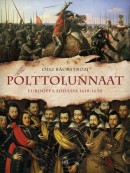 Polttolunnaat. Eurooppa sodassa 1618–1630
Polttolunnaat. Eurooppa sodassa 1618–1630
[Trial by fire. Europe at war 1618–1630]
Helsinki: Suomalaisen Kirjallisuuden Seura (Finnish Literature Society), 2013. 558 p.
ISBN 978-952-222-394-4
€39, paperback
The Thirty Years War of 1618-48 which ravaged Europe, extending its influence to overseas colonies, has been considered a religious conflict in which several countries were involved for reasons of power politics. Olli Bäckström, who belongs to the younger generation of Finnish military historians, sees the first twelve years of the war as a separate entity that bears similarities to the so-called asymmetric conflicts of our own time, such as those in Africa, which are fought by mercenaries and non-state actors for whom war is an industry and way of life. The book begins by describing the situation in Europe in the early seventeenth century, and the background of the war. Contemporary researchers view it as a religious conflict that originally began in Bohemia and then turned into a political power struggle, but Bäckström sees also the early phase as remarkably nuanced. The Nordic states of Denmark and Sweden (of which Finland was a part) were also in pursuit of fame and power on the battlefields of Central Europe, although Sweden did not really take part in the war until the next phase. Bäckström vividly portrays the alliances formed by the various political actors in order to safeguard their interests, and the methods of warfare employed by the armed forces in the service of the different rulers.
Translated by David McDuff
Juha Siltala: Nuoriso – mainettaan parempi? [Youth – better than its reputation?]
20 June 2013 | Mini reviews, Reviews
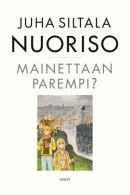 Nuoriso – mainettaan parempi? Nykynuorten sopeutumisratkaisut historiassa
Nuoriso – mainettaan parempi? Nykynuorten sopeutumisratkaisut historiassa
[Youth – better than its reputation? Adaptation responses of contemporary youth in historical perspective]
Helsinki: WSOY, 2013. 543 p, ill.
ISBN 978-951-0-38581-4
38€, hardback
In his latest book professor and psychohistorian Juha Siltala examines what surveys tell us about the lives and attitudes of young people, especially in Finland. Siltala also considers the position of Western youth from a historical perspective. Finnish education has changed dramatically and continually since the Second World War. The media often give a negative image of modern youth, but the author shows that during the 2000s the majority of young people received more attention and better treatment from their parents than previous generations, and also showed a greater sense of social responsibility and faith in the future. However, economic pressures and the ever-increasing demands of the labour market threaten to undermine their confidence in the future and their ability to cope with life. Siltala considers their coping strategies, including fantasy stories, and examines the dangers and negative aspects of youth culture. The book is based on extensive source material and provides a multifaceted discussion of a permanently topical issue.
Translated by David McDuff
Riikka Pelo: Jokapäiväinen elämämme [Our everyday life]
13 June 2013 | Mini reviews, Reviews
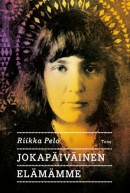 Jokapäiväinen elämämme
Jokapäiväinen elämämme
[Our everyday life]
Helsinki: Teos, 2013. 526 p.
ISBN 978-951-851-389-9
35.90€, hardback
At the centre of Riikka Pelo’s second novel are the Russian poet Marina Tsvetaeva (1892–1941) and her daughter Ariadna Efron (1912–1975). This broad historical novel depicts the mental landscape of Russia during the period between the two great wars, from the 1920s to the 1940s. The mother is a religious believer and idealist, her daughter a more pragmatic empiricist. The family’s fate is controlled by the Soviet state apparatus, which sends it into exile in Paris where Tsvetaeva’s husband Sergei Efron takes a job as a secret police informer in an organisation devoted to the repatriation of Soviet emigrés. In the 1930s they return to Moscow, where life under the watchful eye of Stalin is filled with difficulty and paranoia. Pelo portrays the awkward relationship between mother and daughter with particular vividness. The indisputable star of the family is the mother – her ambition extends to her daughter, who to her disappointment is more interested in the visual arts than in poetry. The historical characters of Pelo’s impressive novel live their contradictory lives in decades of social upheaval.
Translated by David McDuff
Writing silence
6 June 2013 | Fiction, poetry, Reviews
In contemporary poetry the ‘lyric I’ of previous decades often hides behind language; the poem’s speaker is not the poet him/herself, narrative is not the norm. The website of a Finnish family magazine in 2007 discussed this: ‘OMG, this thing called contemporary poetry – crap!’; ‘Who knows what kind of psychopharma the writer’s on!’; ‘No meanings, just words one after the other. Why can’t people write something sensible?’ But the writer – and the reader – of contemporary poetry deliberately ventures onto the boundaries of language, and art requires readers (listeners, viewers) to make the decision of what they consider ‘sensible’. Mervi Kantokorpi explores and interprets two new collections of poetry
I read two of this spring’s new collections of poetry one after the other: Kivirivit (‘Stone lines’, Otava 2013) by Harry Salmenniemi and Pysty hiljaisuus (‘Vertical silence’, Teos 2013) by Miia Toivio. The experience was perplexing.
These two works are completely different from one another as regards their individual poetics, and yet the similarities between the themes that arise from them was arresting. Both works seem to inhabit an internal world of sorrow and depression, a world where the function of poetry is to forge and show its readers a path out of the anxiety. In their silence – and even emptiness – both collections have two faces: one lit up, the other darkened by grief. More…
Art Deco / ja taiteet / i konsten / and the arts
6 June 2013 | Mini reviews, Reviews
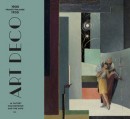 Scientific editor: Laura Gutman
Scientific editor: Laura Gutman
Editor: Susanna Luojus
Helsinki: Suomalaisen Kirjallisuuden Seura (the Finnish Literature Society), 2013. 179 p., ill.
Texts in Finnish and Swedish, summaries in English
ISBN 978-952-222-430-9
€38, hardback
This work was published simultaneously with the opening of the exhibition ‘Art Déco and the Arts. France–Finlande 1905–1935’, running at the Amos Anderson Art Museum in Helsinki from March to 21 July. Antiquity was the primary source of inspiration for this broad artistic movement in France, after the breakthrough of Fauvism in 1905. In Finland this antimodern – and yet at the same very modern – movement manifested itself most clearly in industrial art, in the 1920s in classicism and 1930s in functionalism. But from early on, Finnish painters and sculptors also kept an eye on the French art and artists – among them Maurice Denis, the spokesman of the antimodernists. The dialogue between the visual and the performative arts (theatre and dance) in Finland is also examined. Samples of Art Deco architecture are mostly absent, as the emphasis is on painting and sculpture. Some less well-known artists of the period (painter Nikolai Kaario, sculptor and engraver Eva Gyldén) are introduced. The exhibition and the richly illustrated book introduce both Finnish and French works – from many museums and collections in France – of both industrial and fine arts, in pictures and in words by nine specialists, offering the reader fresh and interesting comparisons.
Valokuva taiteeksi. Photography into Art. Hannula & Hinkka -kokoelma / Collection
30 May 2013 | Mini reviews, Reviews
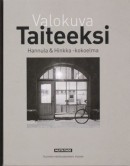 Valokuva taiteeksi. Photography into Art. Hannula & Hinkka -kokoelma / Collection
Valokuva taiteeksi. Photography into Art. Hannula & Hinkka -kokoelma / Collection
Toimituskunta [Edited by] Erja Hannula, Jorma Hinkka, Sofia Lahti, Tuomo-Juhani Vuorenmaa
English translation: Jüri Kokkonen
Helsinki: Aalto University School of Arts, Design and Architecture, Aalto ARTS Books (Musta Taide 4/2012; publication series of The Finnish Museum of Photography 44.) 209 p., ill.
ISBN 958-952-292-000-3
€33.90, hardback
It has been typical of Finland that it lacks collections of international photography, private or public. In the politically turbulent 1970s interest in photography began to grow. The Hippolyte Gallery, run by artist Ismo Kajander, exhibited international photography by Diane Arbus, Eugène Atget and Édouard Boubat, among others. The graphic designer Jorma Hinkka (also Art Director of Books from Finland, 1998–2006) began making posters for Hippolyte ‘out of pure enthusiasm’, and designing books by Finnish photographers, among them Pentti Sammallahti, Ismo Hölttö, Jorma Puranen and Merja Salo. As a result of spending so much time with ‘the black art’ (as it was called by a Finnish pioneer of photography, I.K. Inha, in 1908), Hinkka and his art director spouse Erja Hannula began to collect samples of it. After 30 years, in 2012, they donated more than two hundred photographs by almost a hundred artists to The Finnish Museum of Photography. The social status of the black art has risen considerably since the 1970s, as has professionalism in the field. This book presents excellent reproductions of the collection of photos, taken within a century and a half; the variety of styles and subjects chosen surprise with its richness.
Becoming Finland
23 May 2013 | Reviews
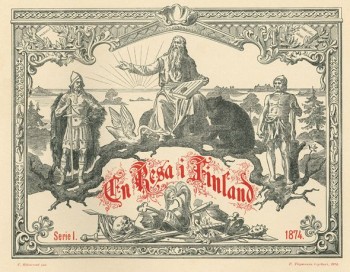
Imaginary heroes: the title page of En resa i Finland. Illustration by C.E. Sjöstrand (1828–1906)
Zacharias Topelius
En resa i Finland
[A journey in Finland (1873)]
Helsinki: Svenska litteratursällskapet i Finland, 2013. 173 p., ill.
Utgivare [Editor]: Katarina Pihlflyckt
ISBN 978-951-583-260-3
€38, hardback
(Stockholm: Atlantis förlag, 2013. ISBN 978-91-7353-616-5)
The birth of Finland as a country came as a surprise to those who lived there.
It was created by Napoleon and Alexander I, becoming a reality following Russia’s victory over Sweden in the so called Finnish War. In 1809 Alexander exalted Finland as ‘a nation among nations’, however the new nation still needed to feel like a nation. The Russian rulers supported gentle and non-political nationalism in Finland, in the hope that it would mentally distance the country from Sweden. In this tranquillity, the sense of community they had envisioned grew in Finland.
For this, there were three key factors, all of which stemmed from the 1830s. Elias Lönnrot published the Kalevala, the national epic, proving that Finnish mythology and culture did indeed exist. The poet J.L. Runeberg (who would later become known as the national poet) gave Finland an appearance that was an ideology. He depicted a poor, pious and simple people, a harsh and beautiful wilderness, and with his poems he described the Finnish War, that Finland had lost, as a heroic battle of the people, fought for Finnish values. More…
Eveliina Talvitie: Keitäs tyttö kahvia. Naisia politiikan portailla [Put the kettle on, girl. Women on the ladder of politics]
23 May 2013 | Mini reviews, Reviews
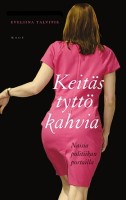 Keitäs tyttö kahvia. Naisia politiikan portailla
Keitäs tyttö kahvia. Naisia politiikan portailla
[Put the kettle on, girl. Women on the ladder of politics]
Helsinki: WSOY, 2013. 332 p., ill.
ISBN 978-951-0-39485-4
€29, hardback
In 1906 Finnish women were the first in Europe to obtain the right to vote, and Finland, like the other Nordic countries, is viewed as a model of equality. Journalist and author Eveliina Talvitie examines the role of women in politics. She has interviewed seventeen Finnish female politicians, more than half of whom have served as cabinet ministers. Among them are former President Tarja Halonen and Elisabeth Rehn, who has long worked on international assignments – between her and the youngest politician in the book there is a 52-year age gap. The interviewees describe the different aspects of the progress of their careers, their successes and setbacks. At the end of each chapter the author considers the challenges faced by female politicians from a particular point of view, backing up her conclusions with supplementary interviews. Not all of the politicians in the book have been handicapped because of their gender, but the work clearly demonstrates that, even in a relatively egalitarian country, female politicians are still treated differently from men, and their career paths can often be more difficult than those of their male colleagues.
Translated by David McDuff

